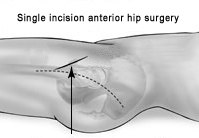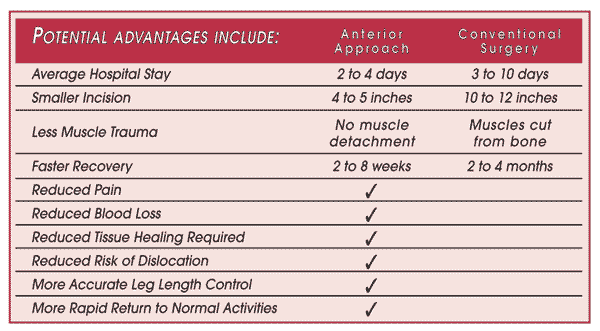
Hip replacement has become a very common surgical procedure today.
The success of traditional hip replacement surgeries have laid the foundation of confidence and belief of numerous people who have hip problems, have been injured in major accidents or have partial disability and immobility due to certain musculoskeletal problems.
Today, there are two types of hip replacement surgeries
- The direct anterior approach
- The Hueter approach.
The latter, Hueter approach, is the more traditional one and had been the only type of surgical procedure used for hip replacement. The direct anterior approach aol desktop gold service number is a more recent development and is the most state of the art hip replacement procedure.
There are many differences between the Hueter approach and the direct anterior approach and it is in these differences that the benefits of the latest hip replacement procedure lay.
First, the direct anterior approach requires a very small incision in comparison with the Hueter approach. With the traditional method, the incisions were usually 8 inches or 10 inches whereas with the direct anterior approach, the incision is only 3 inches or at the most 4 inches. This is also a reason why the direct anterior approach of hip replacement is referred to as minimal anterior approach. It is very less invasive compared to traditional Hueter method of hip replacement.
The fact that the incisions are very small is advantageous for the surgeons and beneficial for the patient. The surgeon doesn’t have to deal with a large opening and the patient doesn’t need to be concerned about scarring or other side effects that come naturally with large incisions.
 The Hueter approach had another major challenge which has been done away with the direct anterior approach. The hip replacement surgery requires extensive operating of the area and that can often adversely affect the muscles and tendons in the adjoining area. With the direct anterior approach, this can be avoided. The surgery uses a small incision and is more precise, leaving no possibility of affecting the adjoining muscles or tendons.
The Hueter approach had another major challenge which has been done away with the direct anterior approach. The hip replacement surgery requires extensive operating of the area and that can often adversely affect the muscles and tendons in the adjoining area. With the direct anterior approach, this can be avoided. The surgery uses a small incision and is more precise, leaving no possibility of affecting the adjoining muscles or tendons.
The direct anterior approach of hip replacement shortens the down time, speeds up the surgical procedure and also reduces the pain associated with the surgery and after the surgery to unprecedented levels. With this latest hip replacement procedure you are unlikely to feel any pain at all. Less downtime, no side effects and a much more convenient recovery period are some other benefits of hip replacement using the direct anterior approach.
If you have any questions relating to the anterior approach to hip replacement surgery, feel free to call our office to schedule a consultation.
